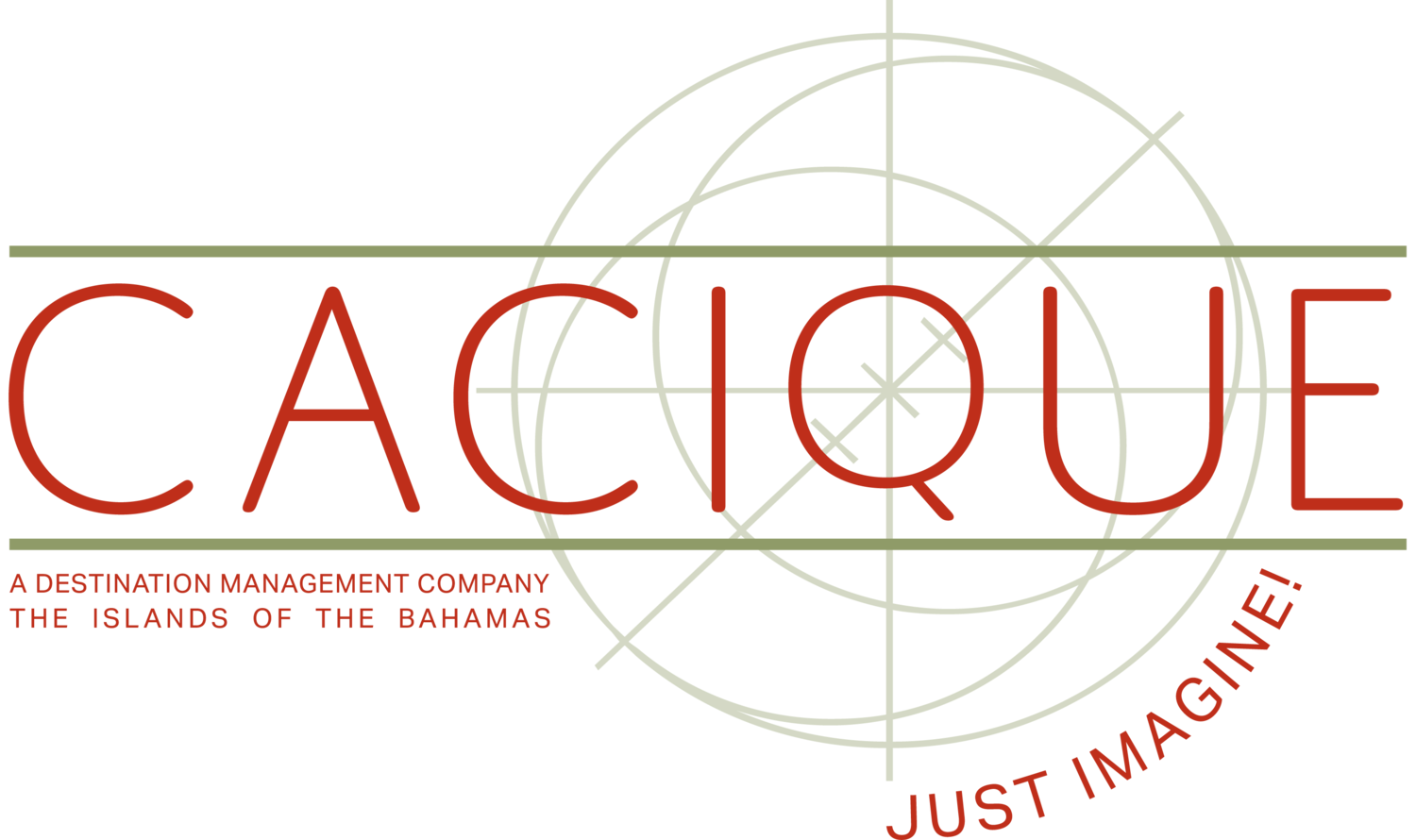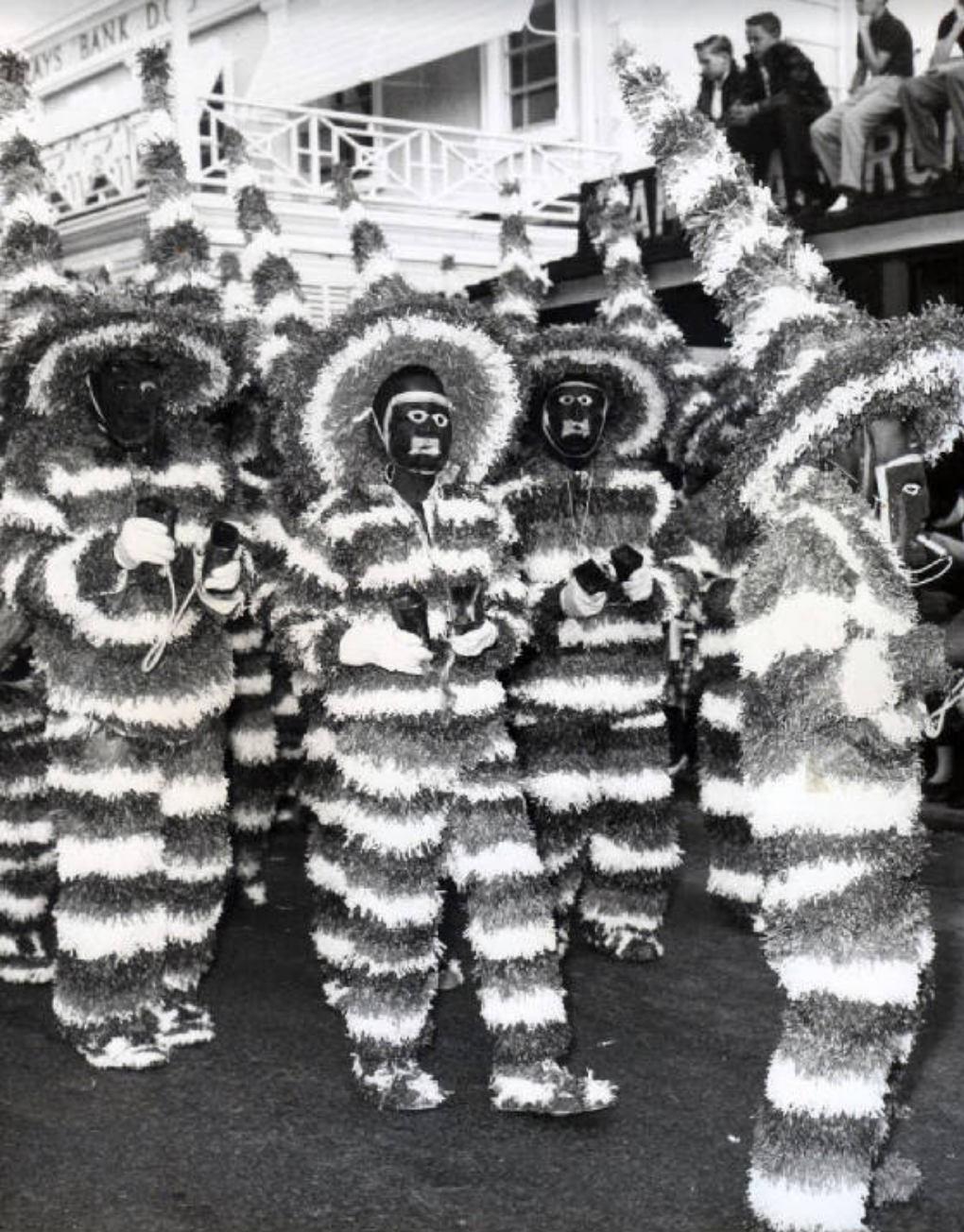Discover Cacique | SPIRIT OF JUNKANOO
“A nation’s culture resides in the hearts and souls of its people. ”
Junkanoo. Say it. The word itself is an incantation. A musical abracadabra that will have you jumping to your feet and joining the Pied Pipers of Nassau Town in a frenzy of whistles, horns and cowbells,moving in unison with the tribe to the age-old heartbeat of drums and the joyous blasts of conch shells.
They say that no man is an island, and nowhere is this more true than Junkanoo - the annual Bahamian parade in which the “Junkanooers,” dripping in colour and gyrating to their eclectic sounds, blend into one people, “rushing” with a burning connectedness. This is the “true true” spirit of Junkanoo. A spirit that lives on, despite what some may say about the soul-stifling version of the modern-day parade, with its rules, cash prizes and fanfare. A spirit that resides in the perennial “pasting” of costumes in Junkanoo shacks, balmy-night practices down the dock and the flare of flames heating goat skin drums. This is not your average street festival. This is no carnival. This is Junkanoo.
dISTINCTIVELY BAHAMIAN
Pronounced junk-uh-NOO, the word may sound like a Scotsman sneezing, but it is common parlance to any Bahamian. The origins of the word, however, are quite obscure, with the following theories being the most popular:
Theory #1
John Canoe was the name of a West African tribal chief who demanded the right to celebrate with his people after being brought to the West Indies as a slave to work on plantations.
Theory #2
The word junkanoo derives from the French inconnu meaning unknown, in reference to the masks worn by the performers.
Theory #3
Junk enoo was a Scottish reference to the parade, meaning “junk enough," in reference to the original costumes, scrapped together from newspaper (geographia.com/bahamas/junkanoo)
The most popular theory is #1. The story goes that John Canoe was successful in his demands and slaves were given one day’s rest over Christmas. Junkanoo is the result of their jubilation as they took to the streets, dressed in homemade costumes where they performed dances to african percussive instruments.
TRUE TRUE SPIRIT
“Junkanoo is a celebration. Junkanoo represents the spirit of the Bahamian culture, and it is this spirit, once celebrated with the intensity of the parades in all other aspects of our culture, that will provide the leadership for our society in the future.”
In its modern-day incarnation, the Junkanoo parade is celebrated twice annually in Downtown Nassau and throughout the islands, attracting gyrating throngs of paraders and spectators in the wee hours of Boxing Day and New Years Day .
Junkanooers are divided into competing, community-based troupes with the main ones being: The Valley Boys, The Saxons, Roots and One Family. Each group has a designated “shack” for all preparatory work, in which costumes are designed and pasted (in accordance with serious rules) months ahead of the showdown. Junkanoo troupes consist of 500-1000 cultural warriors all vying for cash prizes, but more importantly, the prestigious title of Best Junkanoo Group. Competition amongst the groups is fierce, with costume designs kept a closely-guarded secret until the big night of the “rush out.”
Photo Credit: Theo McClain
ALL IN THE DETAILS
At Cacique, we appreciate the minutiae that goes into pulling off an extraordinary event. We call it The Cacique Touch. Similarly, Junkanoo costuming is a meticulous task that requires tremendous skill and artistry. Original costumes were made with discarded newspaper and flour paste face masks. Later, these were replaced with wire masks held on sticks, and in the late 1920’s during the sponging boom, some costumes were made entirely of sea sponges.
Although today’s costumes are large and elaborately decorated (using aluminum rods as the backbone of the assembly), there are strict rules regulated by the National Junkanoo Committee (NJC) involving the use of traditional materials. Since the 1960’s, “shack rats” have had to stick (pun intended) to a basic palette of crepe paper and glue, feathers and beads, ensuring a legacy of true-true artistry in breathing life and soul into rudimentary materials.
INVISIBLE THREADS
At Cacique, we believe in magic. The magic that in theatre is called a “happening” - a spontaneous moment in which actors transcend their role, making the audience feel like they have experienced the exceptional.
In our design world, the magic is made of what you see - venue, design, decor and entertainment - but equally importantly in what you don’t see - the theatre of the night, the invisible strings making magic happen all around you.
That’s the spirit. The magic, which for Junkanoo goes way deeper than a masked parade. Junkanoo speaks to the very soul of a people, a kaleidoscopic expression of cultural emancipation, the thumping heartbeat of a people displaced from their african motherland, then mixed up like conch salad with all the other ingredients of our Bahamian uniqueness. This same spirit is still alive today, jumping from one decade to the next, pulsating in our blood, “rushing” through our DNA like a troupe on Bay Street, boom, boom, boom, the children of our children shouting the timeless encore,“They comin! They comin!”
Warming of the drums. Photo by Theo McLain.
DISCOVER CACIQUE
At Cacique, we love to tell stories about the colourful events, characters and places that form the rich tapestry of our Bahamian history. For more information on Junkanoo or other cultural experiences with Cacique International, please feel free to contact us.
Looking forward to the next story! ;)SMS






